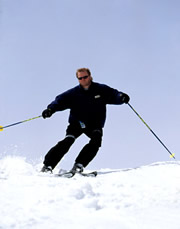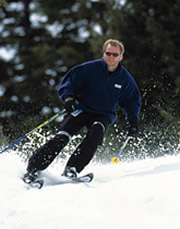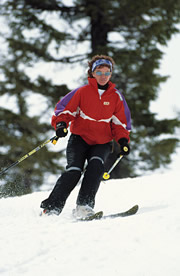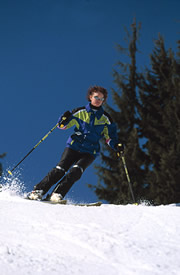- Joined
- Nov 12, 2015
- Posts
- 6,351
Anybody have any resources they want to share on this? It could be what does mis-alignment look like in high performance skiing as well as what it looks like when doing drills.




There's a lot of good stuff in this video:
Alignment ~ On-snow Assessment eVideo
I was working with some of the examiners at Northstar a few years back. We did video when they were going for their level II. We looked at mirroring left and right turns and why they were not looking identical the tried to remove the gear as the variable. What we looked for was A-framing, skidding vs carving on one turn verses the other and hip postion. Most of the video was done on a green/blue trail that was flat as possible with no double fall line.
Anybody have any resources they want to share on this? It could be what does mis-alignment look like in high performance skiing as well as what it looks like when doing drills.
There is a book that includes some comprehensive ways to evaluate a skier's need for alignment while moving downhill on snow. There's a whole chapter on how to do this evaluation, with things to have the skier do that will reveal specific things a bootfitter can do to provide a fix.
It's title is "Alignment Technician Course Manual." It's available in pdf form only, as far as I can tell. Harald Harb is the author. Sorry, but I can't find a picture of the cover since it's only available as a pdf.
What do you mean by matching sidecuts in relation to lead?Appropriate inside ski lead (matching sidecuts).
Haha, I was afraid to add that. It is really my own little tag, not to be taken literally. Meant to help remember one element of the 4 part equation.What do you mean by matching sidecuts in relation to lead?
cheers
Thats where mirroring the turn comes in. If the skier is 1.5* off to the left in both legs, // (she) will have more trouble with one turn more than the otehr. and not be able to mirror as well.If I have essentially the same alignment problem on both sides, is this still a useful diagnostic?
Thats where mirroring the turn comes in. If the skier is 1.5* off to the left in both legs, // (she) will have more trouble with one turn more than the otehr. and not be able to mirror as well.
Like this: / \ or \ / like \\ or this // The former two: Thats where you will see one knee over compensating to match the edge angles. the latter two , i referred to in my previous post.My scenario is where the skier is n degrees off to the inside or outside on both legs. I.e., symmetrical, but misaligned. I happen to be inside edge heavy on both sides, for example. Not exactly to the same degree, but almost.
I was working with some of the examiners at Northstar a few years back. We did video when they were going for their level II. We looked at mirroring left and right turns and why they were not looking identical the tried to remove the gear as the variable. What we looked for was A-framing, skidding vs carving on one turn verses the other and hip postion. Most of the video was done on a green/blue trail that was flat as possible with no double fall line.
Absolutely. There were some that we played with stance and others canting and some both.Was there usable outcome?.....if so, what were some of the observations/corrections?
thanks
JP
This was a couple of years ago..I do recall the oen that was the most in the need of change had jsut bought some Supershapes (Magnums IIRC) and they chances are they were indeed tuned since she bought them at Start Haus.This is a very complicated issue in reality. I totally agree that boot fitting and all that goes with it is extremely important. Im hoping that as folks get more skillful and have more fun, they seek to refine and explore. starting from the ground up like this, is very important.
Did you check the condition of the skis as well?
JP